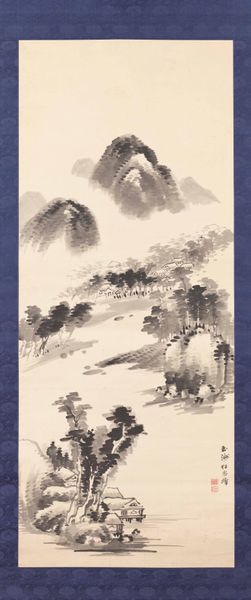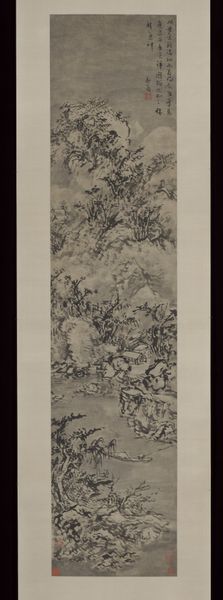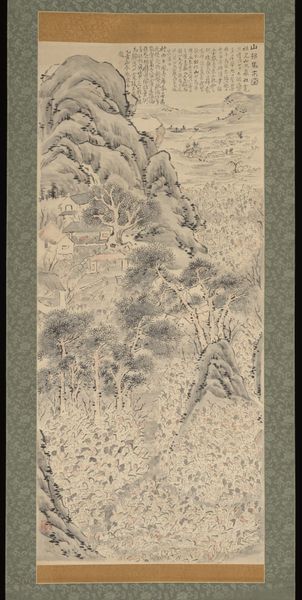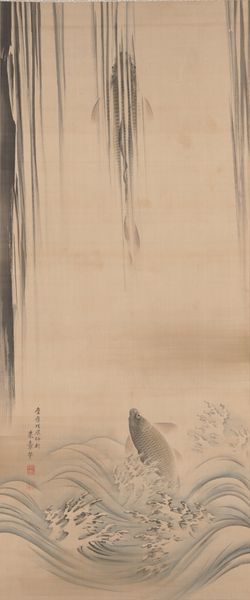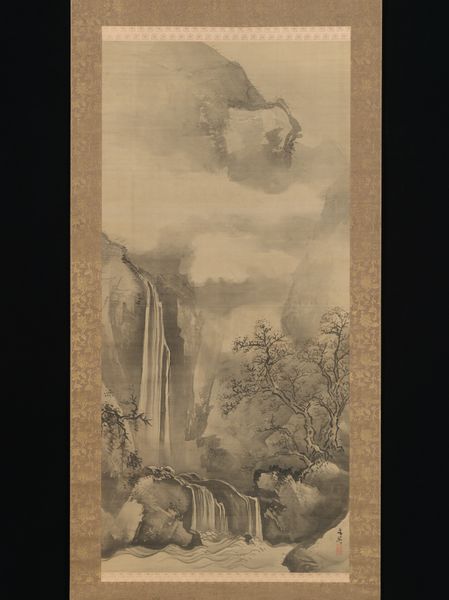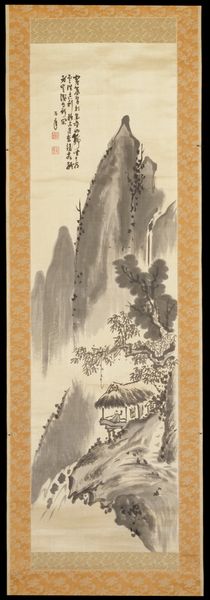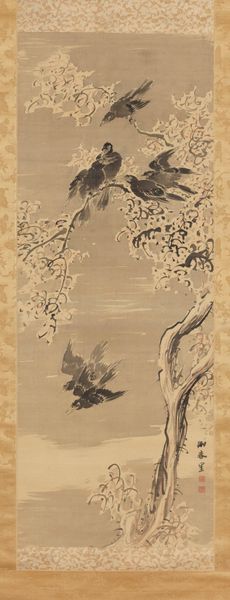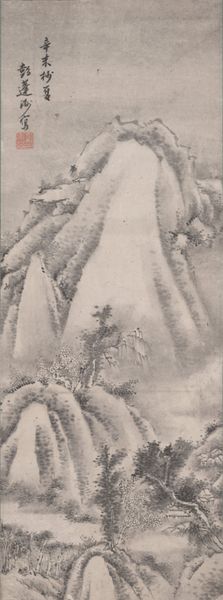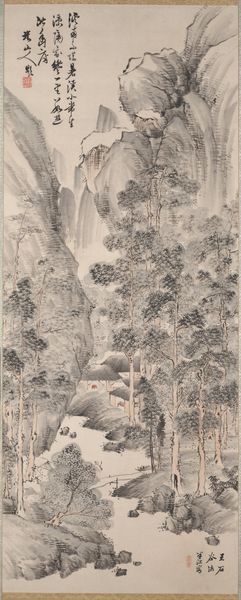
drawing, paper, ink
#
drawing
#
asian-art
#
landscape
#
charcoal drawing
#
japan
#
figuration
#
paper
#
oil painting
#
ink
#
orientalism
Dimensions: 50 3/4 × 16 3/16 in. (128.91 × 41.12 cm) (image)78 × 21 1/8 in. (198.12 × 53.66 cm) (mount, without roller)
Copyright: Public Domain
Curator: This is a c. 19th century drawing by Bunkei, entitled “Mountain Scene,” housed here at the Minneapolis Institute of Art. The work combines ink and color on paper, rendered in a landscape format. Editor: It certainly evokes a sense of peaceful contemplation, doesn’t it? The monochrome palette and vertical composition focus the viewer’s attention upwards toward that mist-shrouded peak. There’s an undeniable monumentality conveyed through a relatively restrained application of ink wash. Curator: Absolutely. I am intrigued by the careful composition: the lower portion occupied by defined trees and rocky formations against the softly rendered mountains above, separated by a seemingly infinite expanse of ethereal mist. Semiotically, the work utilizes negative space and suggestive contours to maximize emotional effect. Editor: The depiction of figures making their way across the delicate bridge provides a focal point in an otherwise all-encompassing vista; it begs the question as to their relationships to these peaks—are they dwarfed and vulnerable, or defiant actors shaping an unknowable fate in this terrain? What do such depictions of sojourners across the pictorial space reflect about 19th-century Japanese identity as Japan experienced its shift from a feudal society toward modernization and greater cultural exchange with the West? Curator: That's quite insightful, particularly the reflection on its position amid shifts in the socio-political landscape. Technically speaking, Bunkei contrasts precise line work with fluid brushstrokes that add nuance to the scene. A striking opposition between order and chaos. Editor: Yes, that dichotomy permeates its meaning. It subtly communicates not just the naturalism of landscapes, but a reflection of shifting identities; a time of negotiating national boundaries amidst burgeoning cosmopolitanism. Are those travelers searching for their path amidst the rapid modernization that challenged traditional conceptions of personhood and nationhood? Curator: The materiality further augments its intended effect: The absorptive qualities of the paper lend itself to diffusion of ink that underscores the scene’s contemplative mood, evoking stillness through reduction. The ink becomes a meditation on transience. Editor: And perhaps in rendering that transience, the artist gives form to larger movements; a visual anchor for considering the transformations sweeping Japan at that moment. Thank you for unpacking some of those subtle connections between material execution, aesthetic intent, and socio-cultural themes at play within the Mountain Scene. Curator: My pleasure. I find its visual balance and meditative approach deeply satisfying.
Comments
No comments
Be the first to comment and join the conversation on the ultimate creative platform.


